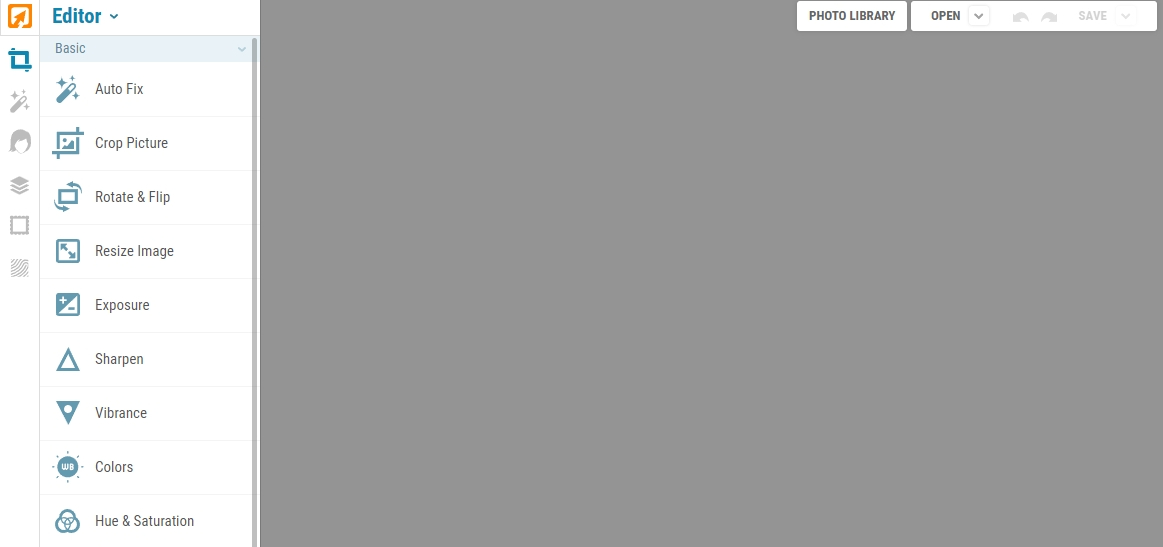iPiccy is a web-based photo editing and sharing application that offers a simple yet powerful set of features to alter and transform pictures. From traditional editing tools, like sharpness and contrast, to RGB level shifting, iPiccy offers a robust palette of photographic adjustments. Additionally, iPiccy includes the ability to create several layers of pictures for a blending of images, similar to Adobe Photoshop.
 iPiccy interface screenshot
iPiccy interface screenshot
Tool Snapshot
| Price |
Free |
| Learning |
Constructionism |
| Ease of Use |
★★★✩✩ |
| Privacy |
★★★★★ |
| Accessibility |
★★★★✩ |
| Class Size |
Unlimited |
| ISTE*S |
Creative Communicator |
iPiccy Overview
iPiccy was founded by Alex Bespechny in 2011. Bespechny, a lawyer in New York City, “wanted to make photo editing online really easy and interesting” that did not heavily rely on a computer’s graphics processing and was available to the masses. iPiccy allows users to edit single photos through a robust set of photo manipulation features, including cropping, color correction, text boxes, and photo layering.
As a learner-centered tool, iPiccy promoted intrinsic motivation through creative expression and flexible decision-making through its variety of aesthetic variables. For ease of use, there are automatic settings to apply changes to best fit your needs. In regards to privacy, iPiccy does a great job protecting the information and ownership retention of its users. Users retain ownership rights to all content produced, and iPiccy has limited distribution exclusively for purposes of contest promotion of user work.
iPiccy Overview Video
iPiccy & the SAMR Model
- Substitution
- Students can edit photos digitally rather than manually.
- Augmentation:
- Students can undo certain effects and manipulations applied.
- Modification
- Students can engage in advanced photo editing and digital manipulation of images.
- Redefinition
- Students can create any image from their imagination.
Learning Activities
Mathematics
Students can explore the Red, Green, and Blue values of pictures and the relation of luma curves to picture exposure.
Students can add pictures and annotations to graphs, charts, and other sources and have them embedded in one central photograph
Science
Students can create collages of pictures that highlight certain ecosystems or natural processes, connecting each component through a different layer complete with text and symbols (arrows, pathways, etc…)
History
Students can take a webcam photo of themselves and dress up in period-era clothing to discuss various styles and throughout different periods and cultures.
Resources
Research
Grandon, M. (2019). Learner Use of Photo-Editing Software in Classes. Japan Association for Language Teaching (JALT).
Henriksen, D., Creely, E., Henderson, M., & Mishra, P. (2021). Creativity and technology in teaching and learning: a literature review of the uneasy space of implementation. Educational Technology Research and Development, 69(4), 2091-2108.